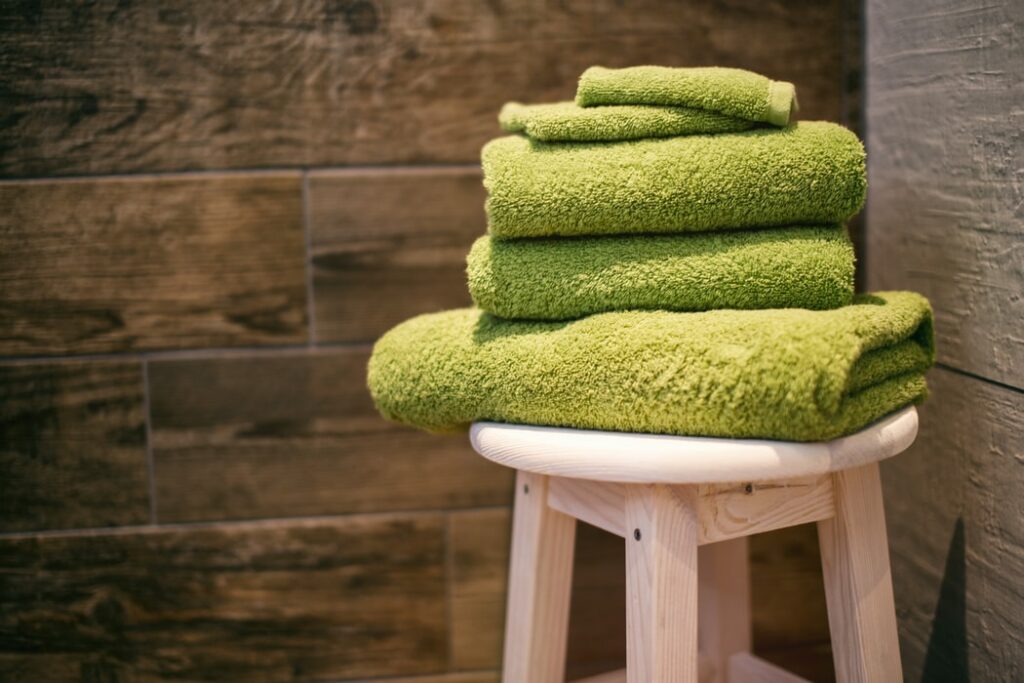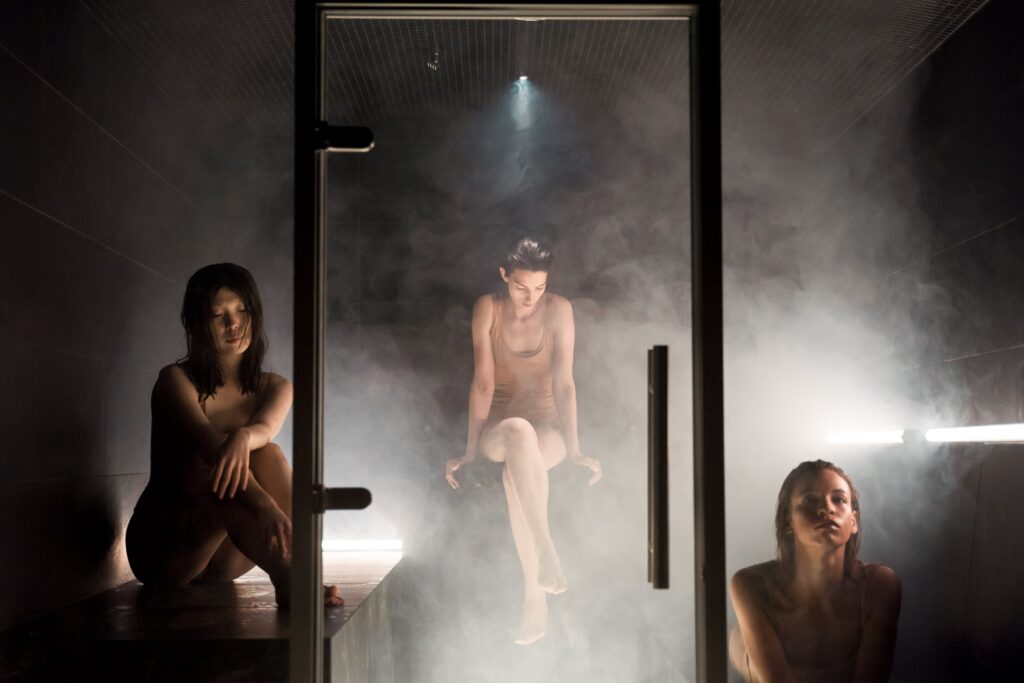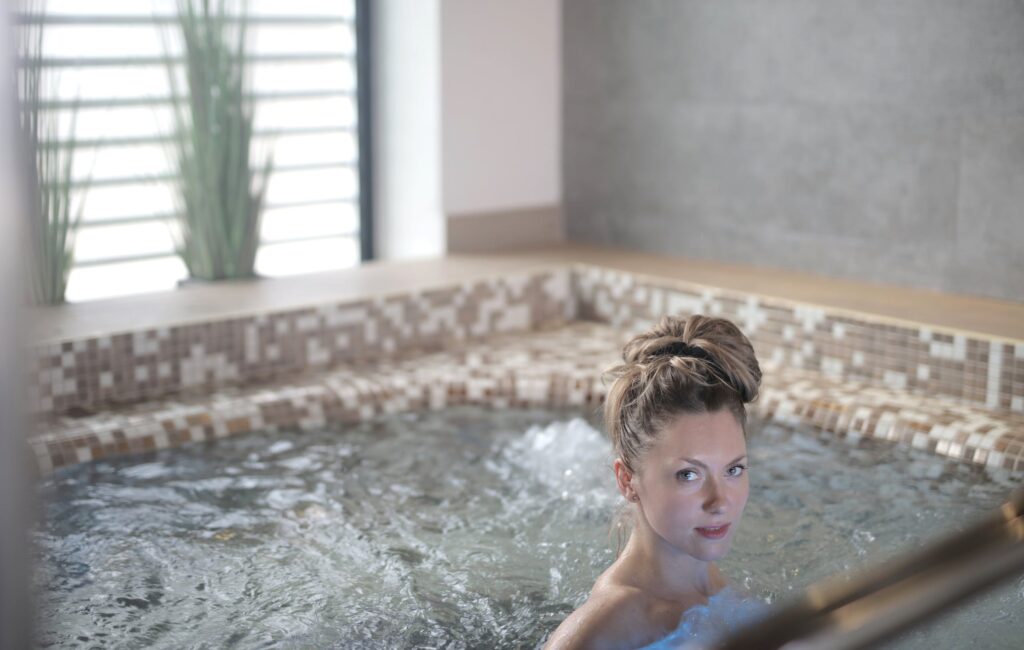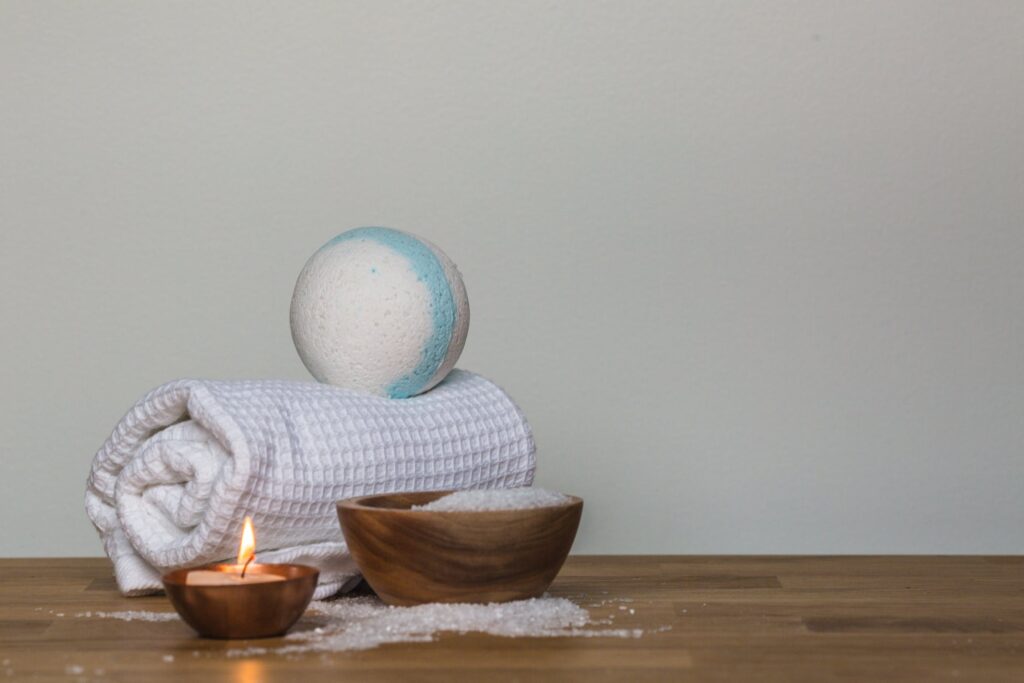Sauna bathing has developed into something of a national sport in Finland, where there is approximately 1 sauna for every 3 inhabitants in the country. The tradition of using saunas as a way to relax and cleanse the body dates back thousands of years, and even now the majority of Finns adhere to this practice on a weekly basis. The Finnish Sauna Society and other devotees of the heat treatment practice offer in-depth guidance on how to make the most of your time spent in the sauna by sharing their expertise as seasoned practitioners of the art.
You'll notice a gradual improvement in the outcomes you obtain from your sauna practice if you follow enough of these guidelines, do them the right way, and do them enough times. Do you have any idea how long you should sit in a sauna or how frequently you should use one? It is crucial to follow these sauna recommendations if you want to experience the most amount of health benefits that your sauna has to offer.
FAQs About Sauna
When you get into a sauna, the temperature leads to a dramatic increase in blood circulation. This in turn gives your skin a healthy and fresh appearance, as if you were coming straight from the skiing slope or from a run in the woods. A fresh, healthy glow - with no need for makeup.
Saunas and steam rooms are both effective for cellulite because they help reduce fat and open your skin's pores. People often develop cellulite because fat, water, and toxins collect in their skin's subcutaneous layer. The heat in a sauna helps remove toxins from your body's fat tissues, including those with cellulite.
A Sauna Room is a harsh environment that consists of high temperature and acidic body perspiration. Sweat contains salts and bacteria that can damage the wood in the sauna and lead to bad odors. A sauna should be wiped down with water after every use.
Wearing something comfortable made of cotton is the best thing you can wear in a sauna. A classic oversized t-shirt, a loose-fitting cotton towel, and shorts are always good for the sauna. They allow your skin to breathe freely; this helps you enjoy a sauna session to its full potential.
Cotton is the perfect cloth for relaxing in the sauna, as it absorbs excess heatwaves and allows the skin to breathe properly. Even if they are cotton, avoid wearing any tight clothes, including underwear. Any bras worn into the sauna should be loose-fitting, breathable, and free of underwires.
Shower Before and After Using Your Sauna
Some people who like to sauna find that taking a shower before entering one makes them sweat more quickly and heavily, which in turn provides them with an enhanced experience that is both invigorating and restorative. Taking a shower not only helps to remove dirt, lotions, and other residues that block pores, but it also helps to boost blood flow throughout the body, which allows you to sweat without restriction.
Even though it is not required, some people who use saunas find that taking a shower before entering the sauna causes them to sweat more heavily and more quickly, which in turn gives them a more stimulating experience. It may also initiate the process of stimulating circulation throughout your body.
This shower will also eliminate grime, dry skin, lotion, or any other residue that could prevent effective sweating, so make sure to give it a shot. In addition to that, you might also try brushing your skin when it is dry. This brushing will enhance circulation, in addition to having other beneficial effects. It is not required, but it does provide some benefits, and many people believe that it is a wonderful experience.
Taking a shower right after a session in the sauna is something that a lot of people do since it helps them feel cleaner, more refreshed, and more energized. Do not use shower gel to wash your body after you have finished your previous sauna session. Instead, just rinse off, as your body is now spotless and revitalized thanks to the sauna session.
Sauna Bathing Au Natural
The health advantages of sauna bathing are maximized when the bather removes all of their clothing before entering the sauna. When you wear clothes, the ability of infrared heat to reach your skin and the rest of your body is hindered. If you have a pain condition such as fibromyalgia, arthritis, or another type of pain condition, exposing the painful areas directly to infrared light waves is necessary for lowering inflammation to the greatest extent feasible.
Wearing clothes in a conventional sauna can prevent sweat from evaporating effectively. Sweat is produced by the body as a means of regulating internal temperature; however, if the perspiration does not evaporate, the cooling mechanism has not been effective. You want to maintain the cycle of heat, sweat, and evaporation as much as possible. In order for your body to reap the full benefits of the sauna experience, you should expose as much of your skin as possible to high temperatures.
In order to have the greatest possible experience, you should not wear any clothes at all, particularly in an infrared sauna. If it is in your house, then this is a possibility. Because clothing blocks the infrared, the area that is wounded or needs particular attention must be in direct touch with the infrared light waves. This ensures that the area receives the proper care.
If you must wear clothing, make sure it is lightweight, loose-fitting, and breathable, and wear as little as necessary of it. The shirt and shorts made of cotton are undoubtedly the superior options. Despite the fact that one should roll up their sleeves, legs, and waist in order to expose as much flesh as possible to the infrared, this is not what is required.
How Long Should You Stay in a Sauna?
Your ability to tolerate heat, your age and certain aspects of your health all play a role in determining how long you can remain in a sauna without feeling uncomfortable. Users of saunas typically stay in the sauna for ten to fifteen minutes before exiting, having a moment to cool off, and then returning to the sauna for a second time. After exiting the sauna, some people like to take a little swim in the refreshing water and then relax for a few minutes before going back inside. After that, they resume the process. The standard number of cycles for taking a sauna bath and then cooling off afterward is three, although the number of rounds you take can be increased or decreased depending on what seems comfortable to you.
Sessions of ten to fifteen minutes should be the starting point for beginners. Gradually work your way up to twenty-five - thirty min. However, I also pay attention to your physical state. Open the door or easily step outside of the cabin if you feel yourself beginning to become weak, weary, or overheated. When you first start, you should make every effort not to push yourself too hard throughout any session.
In addition, many novices who have led a more sedentary lifestyle may find that they do not begin to sweat until after being in the cabin for twenty to thirty minutes. This might be considered normal. As you continue to improve, your body will become accustomed to sweating at an earlier stage.
Lower temperatures, between 110 and 125 degrees Fahrenheit, are ideal for enjoying an infrared sauna. If you are accustomed to the classic steam version, in which temperatures can reach 180–200 degrees Fahrenheit, you would think that this is quite chilly. In point of fact, you will accrue a greater number of benefits if you maintain a lower temperature.
According to an article that was published by Mercola, staying in the sauna until you feel tired raises your levels of prolactin, which is involved in the procedure of myelination and is required for the proper operation of the nervous system, by up to tenfold. Increasing your levels of norepinephrine, which is critical for focus and attention, raises your levels of norepinephrine by up to threefold, which is also critical for attention and focus. Furthermore, you can increase your endurance by engaging in hyperthermic conditioning, also known as acclimating oneself to heat without engaging in aerobic physical activity. This can be accomplished by frequent use of a sauna, and it causes your body to adapt to higher temperatures as a result.
When it comes to how frequently you should use a sauna, studies have shown that the benefits rise with longer periods of use. Although there was some improvement with only one or two sessions per week, the largest advantages were achieved with three or more sessions per week.
Exfoliate and Boost Circulation
There are a few different things you can do while you're in the sauna that will help increase circulation to your skin and enhance the advantages you receive from the experience. Brush the skin on your arms, legs, tummy, and back while you are in the sauna. You can also lightly scratch or tap the skin in these areas. During your time in the sauna, this will cause your pores to open up more, and it will also increase the flow at the surface of your body.
Toxins can be eliminated from the body through perspiration, which can be done more effectively in a sauna. This is one of the many reasons why saunas are so healthy. However, before entering a sauna, you should give yourself a little brushing, concentrating on your stomach, legs, back, and arms. By doing so, you will stimulate your pores, causing additional pores to open, while also improving the circulation of blood throughout your body. It works really well to use a bath brush, or even a sauna whisk (this is a traditional procedure in which you lightly slap your back, arms, and legs with a bundle of small branches, typically made of birch or oak, while you are in the sauna). No matter which approach you choose, all of these strategies will assist you in eliminating toxins from your body when you sweat.
Some people find that their sauna experience is improved by the addition of a "vasta" or "vihta" (the name changes depending on the location). This is a reference to a bundle of new birch twigs that are used as a light cane to lash oneself. After doing that, you'll find that your skin is noticeably smoother, as strange as that may sound.
Fiber for Mobilized Toxin Removal, Detoxification Of Chemicals And Heavy Metals
After the toxins have been released and activated in the body, those that are not expelled through the sweat glands are allowed to leave the body through the digestive tract. If the intestines do not have enough fiber, then some of these toxins will be absorbed back into the body and will be stored in fat cells once more.
Consuming fiber in the form of a protein shake, green powder, vegetables and fruits more than an hour before or after your period in the sauna use can be advantageous in assisting in the removal of these toxins. However, eating a heavy meal prior to entering the sauna is not advised because it can slow down the elimination of these toxins.
The majority of individuals do not sweat consistently or enough, despite the fact that the skin is a significant organ involved in the detoxification process and that sweating via the skin is an essential part of the human detoxification process. Do you believe that detoxification is a woo-woo, airy-fairy fantasy that involves pulling enormous shopping carts full of vegetables through Whole Foods? Think again. It is possible that you should read this.
If you read the article that was just up there, you will learn that the skin, along with the liver and the feces, is a very efficient organ for the body to use when it comes to getting rid of toxins; but, in order for the skin to be successful, you need to make your body sweat. However, many of us spend our days in indoor locations that are air-conditioned, and even fitness centers that have temperature control can be a challenging situation in which to break a serious sweat. Therefore, in circumstances like these, you are not making use of one of the most important organs for the elimination of toxins, which is the skin.
A sauna can detoxify the body from the inside out, eliminating substances such as PCBs, metals, and toxins that are stored in fat cells. When exposed to infrared-based heat, fat cells can undergo lipolysis and release toxins, so using a sauna to combat these effects can help purify the body from the inside out. You read that correctly: when you sweat in a sauna, you are going to do battle against and ultimately kill small screaming fat cells to death.
Stay Hydrated to Maximize Health Benefits
Alcohol should not be consumed either before or after a session in the sauna for the same reason that you should consume two to four glasses of cool water after using the sauna: to rehydrate. Because using a sauna causes you to sweat heavily, you need to make sure you drink enough water to make up for the amount you lose via perspiration. During a quick session in the sauna, the typical person will sweat off approximately one pint. On the other hand, due to the rapid rate at which it evaporates in the dry air, a person might not be aware of how much they are sweating.
The detoxification process should always begin with the most straightforward steps possible. Hydrate. Before you enter the sauna, make sure you hydrate yourself with a glass of water. Before, during, and after the heat therapy, the patient should drink an increasing amount of water regardless of the temperature that will be reached.
Before beginning your session, be sure to drink a full glass of water that's anywhere between 16 and 20 ounces. You might also try drinking a sports drink that does not include any sugar, or even better, water made from coconuts. Coconut water has the additional benefit of being loaded with electrolytes and all of the nutrients that are necessary for your body to assimilate the fluid completely and rapidly. This makes drinking coconut water an advantageous choice for people who are dehydrated.
Stay away from sugary beverages such as sodas, coffee, and fruit juices that have added sugar. Your body will try to sweat poisonous waste out of itself, but in order for it to do so effectively, it will require a significant amount of fluid.
How significant is this matter? The Holistic Healing Centre, which can be found just outside of Sydney, Australia, provides clients with an informative pamphlet that details the optimal way to use their saunas. And the most important part is about keeping yourself hydrated:
Tomato juice, which can aid in the replenishment of potassium after a session in the sauna due to its high concentration of nutrients, is enjoyed by certain people who use the space.
After the Sauna
After your session, you should get into a nice, hot shower to remove the toxins that are now sitting on the surface of your skin. Invigorating oneself and one's skin with a cool shower rinse after a warm shower is something that many people find to be beneficial. Therefore, treat yourself to a hot shower, followed by a refreshing rinse. Additionally, this will cause the pores to close.
When you shower, steer clear of strong lotions and soaps that are loaded with chemicals. When you first get out of the sauna, your pores are wide open, and you should make every effort to prevent clogging them.
Because a session can frequently leave you feeling a bit fatigued for a few minutes at a time, you should schedule some time in your schedule to relax.
Some users find that the session helps them to relax, which in turn makes it easier for them to get a good night's sleep, and these users prefer to use the sauna in the evening. Others leave the session feeling re-energized and relish the opportunity to capitalize on that feeling in the hours leading up to bedtime. You will quickly figure out which part of the day you appreciate the most.
Hydrate again. Drink another glass of water ranging from 8 to 16 ounces to replace the fluids that have been lost while undergoing heat therapy.
Stretch Out!
Stretch out your arms and legs while you're in your sauna rather than sitting rigidly to get the most out of the therapeutic effects of the experience. If you are able to, you should try to lie down because this will ensure that your entire body is subjected to the same temperature. This not only helps to increase the range of motion and flexibility, but it also has the potential to help reduce pain and stiffness more quickly.
If you want to get the most out of the health advantages of sauna bathing, you should be sure that your sauna is equipped to handle all of your specific health requirements. Get in touch with a local dealer of Finnleo to find out more about the many different kinds of saunas and to get recommendations on which one would be best for you.
Tip
According to holistic physician Lawrence Wilson, who authored the book "Sauna Therapy," the best time to use a sauna is either first thing in the morning or last thing at night. Because you are most likely to be the calmest at those times, the sauna session will be more effective during those times. According to Wilson, the more one relaxes, the more perspiration one will produce. Additionally, Wilson recommends going to the sauna on a weekly basis. According to what he recommends, you should start with no more than one session each day, and that session should not exceed thirty minutes. According to Wilson, if you are recovering from an illness, you should start using the sauna once per week and then work up to using it every day.
Warning
According to the recommendations of the Finnish Sauna Society, you shouldn't consume alcoholic beverages while you're in the sauna. It is important that the sauna not be heated to a temperature that is higher than 212 ° F. According to Wilson, you should immediately exit the sauna if you start to feel faint, if you stop sweating, or if your heart starts to race. The Finnish Sauna Society recommends that anyone who suffers from conditions such as heart illness, high blood pressure, asthma, or skin disease should keep the heat below 194 ° F and avoid sudden swings in temperature from hot to cold and vice versa. They suggest that pregnant women can safely go to the sauna under the same conditions, but the heat should be lowered to 158 ℉. According to Wilson, pregnant women should steer clear of saunas.
What you can expect to happen in the sauna
When you first enter the sauna, you shouldn't anticipate breaking a sweat immediately soon. It may take a few minutes or longer for someone who is accustomed to using saunas, has used them frequently, and has a high sweating threshold to start perspiring visibly in a sauna.
You'll probably find that the more frequently you use the sauna, the more profusely you sweat after using it. Assuming you keep at it, you'll eventually become a champion sweater just like I did, if you don't give up! Just wait until you see the sweat running down my back! I am able to drench a towel! The more you perspire, the more water you'll need to replace what you lose via sweating.
Some people don't sweat in the sauna initially
On the other hand, if you've never been to a sauna before, you might find that the first few times you go, or perhaps the first few times, you don't sweat at all. Some people have reduced sweating mechanisms as a result of past exposure to pesticides or other harmful exposures. This may sound weird, but it is a real medical condition.
If this is your situation, proceed with caution, keeping in mind that you won't be able to withstand the sauna for as long or derive the same health benefits from it if you don't sweat while you're in it. If you continue doing what you're doing, the problem should fix itself, and you'll be able to resume sweating normally.
Also, keep in mind that in order to sweat effectively, you need to have plenty of water in your system. If you find that you are not sweating as much as normal when in the sauna, try increasing the amount of water that you consume.
During the first fourteen days of our sweat purification treatment, my mother's right knee down to her feet did not produce any sweat at all. She had surgery on that ankle, which resulted in leg swelling that went all the way up to her knee. Additionally, her lymph system and her capacity to sweat in that leg were impacted. We gave her a round of applause when, after two weeks of the program, we noticed that she was sweating regularly from that leg again.
Although historical evidence gives us good reason to believe that saunas were beneficial in the Americas, the majority of people believe that the origin of saunas can be traced back to Europe, and more specifically to the Nordic region. The culture of the Finnish sauna has a long history and is well-known in many countries throughout the world.
In recent times, the culture of having a sauna session has extended over the entirety of the planet, regardless of where it may have originated. If you have never been to a sauna or steam room before, you should begin with a brief session and work your way up to spending longer and longer periods of time in each chamber. And don't forget to consult your primary care physician if you're feeling lightheaded or if you're experiencing any other unusual symptoms or if you have any health concerns. This is due to the fact that therapists and regular people alike have come to acknowledge the positive effects that a sauna session may have on one's health.
In the end, it is better to think of bathing in a sauna as an additional activity that one might choose to incorporate into a healthy lifestyle. If and when you find that you love performing it, you should think about incorporating it into your regular schedule. Just make sure you're not drunk when you attempt it.
Conclusion
Sauna bathing is a national sport in Finland, and the Finnish Sauna Society and other devotees offer guidance on how to make the most of it. Follow these guidelines to experience the most health benefits. Wearing clothes in a conventional sauna can prevent sweat from evaporating effectively, so it is important to expose as much of your skin as possible to high temperatures in an infrared sauna. Sauna use depends on ability to tolerate heat, age, health, and physical state. Beginners should start with 10-15 minutes and work their way up to 25-30 minutes.
Lower temperatures are ideal for infrared saunas. Stay in the sauna until you feel tired to increase prolactin, norepinephrine, and endurance. Exfoliate and boost circulation to increase circulation and eliminate toxins. The most important idea is that sweating via the skin is an essential part of the human detoxification process, and that eating a heavy meal prior to entering the sauna can slow down the elimination of toxins. A sauna can detoxify the body from the inside out, eliminating substances such as PCBs, metals, and toxins stored in fat cells.
Hydrate before, during, and after the heat therapy, drink a full glass of water, and stay away from sugary beverages. The Holistic Healing Centre provides clients with an informative pamphlet that details the optimal way to use their saunas, including hydration, stretching out, and avoiding strong lotions and soaps. The Finnish Sauna Society recommends that anyone who suffers from conditions such as heart illness, high blood pressure, asthma, or skin disease should keep the heat below 194 ° F and avoid sudden swings in temperature. The more frequently you use the sauna, the more profusely you sweat, but some people may not sweat initially. Saunas have a long history and are beneficial for health, so it is important to start with a brief session and work up to longer ones.
Content Summary
- It is crucial to follow these sauna recommendations if you want to experience the most amount of health benefits that your sauna has to offer.
- Taking a shower right after a session in the sauna is something that a lot of people do since it helps them feel cleaner, more refreshed, and more energized.
- Your ability to tolerate heat, your age and certain aspects of your health all play a role in determining how long you can remain in a sauna without feeling uncomfortable.
- Users of saunas typically stay in the sauna for ten to fifteen minutes before exiting, having a moment to cool off, and then returning to the sauna for a second time.
- However, I also pay attention to your physical state.
- Lower temperatures, between 110 and 125 degrees Fahrenheit, are ideal for enjoying an infrared sauna.
- Brush the skin on your arms, legs, tummy, and back while you are in the sauna.
- Some people find that their sauna experience is improved by the addition of a "vasta" or "vihta" (the name changes depending on the location).
- Consuming fiber in the form of a protein shake, green powder, vegetables and fruits more than an hour before or after your period in the sauna use can be advantageous in assisting in the removal of these toxins.
- The majority of individuals do not sweat consistently or enough, despite the fact that the skin is a significant organ involved in the detoxification process and that sweating via the skin is an essential part of the human detoxification process.
- If you read the article that was just up there, you will learn that the skin, along with the liver and the feces, is a very efficient organ for the body to use when it comes to getting rid of toxins; but, in order for the skin to be successful, you need to make your body sweat.
- Therefore, in circumstances like these, you are not making use of one of the most important organs for the elimination of toxins, which is the skin.
- Stay Hydrated to Maximize Health BenefitsAlcohol should not be consumed either before or after a session in the sauna for the same reason that you should consume two to four glasses of cool water after using the sauna: to rehydrate.
- Hydrate.
- After the SaunaAfter your session, you should get into a nice, hot shower to remove the toxins that are now sitting on the surface of your skin.
- Therefore, treat yourself to a hot shower, followed by a refreshing rinse.
- Hydrate again.
- If you want to get the most out of the health advantages of sauna bathing, you should be sure that your sauna is equipped to handle all of your specific health requirements.
- On the other hand, if you've never been to a sauna before, you might find that the first few times you go, or perhaps the first few times, you don't sweat at all.
- Also, keep in mind that in order to sweat effectively, you need to have plenty of water in your system.
- If you find that you are not sweating as much as normal when in the sauna, try increasing the amount of water that you consume.
- She had surgery on that ankle, which resulted in leg swelling that went all the way up to her knee.
- Although historical evidence gives us good reason to believe that saunas were beneficial in the Americas, the majority of people believe that the origin of saunas can be traced back to Europe, and more specifically to the Nordic region.
- The culture of the Finnish sauna has a long history and is well-known in many countries throughout the world.
- If you have never been to a sauna or steam room before, you should begin with a brief session and work your way up to spending longer and longer periods of time in each chamber.






